 W
WNative American tribes in the U.S. state of Nebraska have been Plains Indians, descendants of succeeding cultures of indigenous peoples who have occupied the area for thousands of years. More than 15 historic tribes have been identified as having lived in, hunted in, or otherwise occupied territory within the current state boundaries.
 W
WThe Arapaho are a tribe of Native Americans historically living on the plains of Colorado and Wyoming. They were close allies of the Cheyenne tribe and loosely aligned with the Lakota and Dakota.
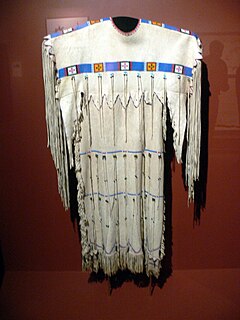 W
WThe Cheyenne are one of the indigenous people of the Great Plains whose language is of the Algonquian language family. The Cheyenne comprise two Native American tribes, the Só'taeo'o or Só'taétaneo'o and the Tsétsêhéstâhese. These tribes merged in the early 19th century. Today, the Cheyenne people are split into two federally recognized Nations: the Southern Cheyenne, who are enrolled in the Cheyenne and Arapaho Tribes in Oklahoma, and the Northern Cheyenne, who are enrolled in the Northern Cheyenne Tribe of the Northern Cheyenne Indian Reservation in Montana.
 W
WThe Dakota are a Native American tribe and First Nations band government in North America. They compose two of the three main subcultures of the Sioux people, and are typically divided into the Eastern Dakota and the Western Dakota.
 W
WJohn Dunbar (1804-1857) was a missionary who tried to Christianize the Pawnee Indians of Nebraska during the 1830s-1840s.
 W
WThe Glenwood Culture was a population of Indigenous peoples of North America prior to historical times. The culture is recognized as an eastern extension of the Nebraska Phase of the Woodland period, and was not a Mississippian culture.
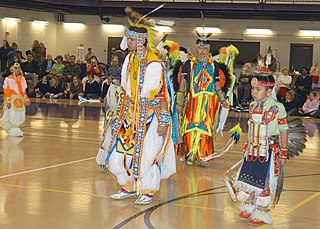 W
WThe Ho-Chunk', also known as Hoocągra or Winnebago , are a Siouan-speaking Native American people whose historic territory includes parts of Wisconsin, Minnesota, Iowa, and Illinois. Today, Ho-Chunk people are enrolled in two federally recognized tribes, the Ho-Chunk Nation of Wisconsin and the Winnebago Tribe of Nebraska.
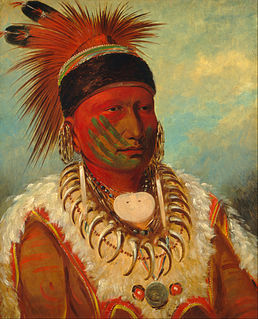 W
WThe Iowa or Ioway, known as the Bah-Kho-Je or Báxoje in their language, Chiwere, are a Native American Siouan people. Today, they are enrolled in either of two federally recognized tribes, the Iowa Tribe of Oklahoma and the Iowa Tribe of Kansas and Nebraska.
 W
WThe Iowa Tribe of Kansas and Nebraska is one of two federally recognized tribes of Iowa people. The other is the Iowa Tribe of Oklahoma.
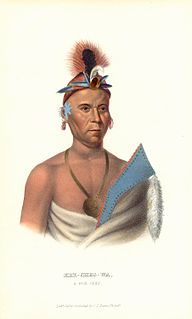 W
WThe Meskwaki are a Native American people often known by Western society as the Fox tribe. They have been closely linked to the Sauk people of the same language family. In the Meskwaki language, the Meskwaki call themselves Meshkwahkihaki, which means "the Red-Earths", related to their creation story. Historically their homelands were in the Great Lakes region. The tribe coalesced in the St. Lawrence River Valley in present-day Ontario, Canada. Under French colonial pressures, it migrated to the southern side of the Great Lakes to territory that much later was organized by European Americans as the states of Michigan, Wisconsin, Illinois, and Iowa.
 W
WThe Oglala are one of the seven subtribes of the Lakota people who, along with the Dakota, make up the Očhéthi Šakówiŋ. A majority of the Oglala live on the Pine Ridge Indian Reservation in South Dakota, the eighth-largest Native American reservation in the United States.
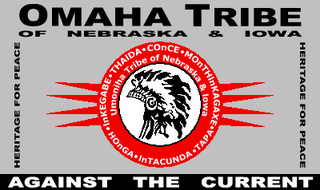 W
WThe Omaha are a federally recognized Midwestern Native American tribe who reside on the Omaha Reservation in northeastern Nebraska and western Iowa, United States. The Omaha Reservation lies primarily in the southern part of Thurston County and northeastern Cuming County, Nebraska, but small parts extend into the northeast corner of Burt County and across the Missouri River into Monona County, Iowa. Its total land area is 796.355 km2 (307.474 sq mi) and a population of 5,194 was recorded in the 2000 census. Its largest community is Macy.
 W
WThe Otoe are a Native American people of the Midwestern United States. The Otoe language, Chiwere, is part of the Siouan family and closely related to that of the related Iowa and Missouri tribes.
 W
WThe Panismahas or Panimaha were a sub-group of the Pawnee. They mainly appear in the 18th century, and how they connect with later 19th century groups is somewhat unclear. They may have been somehow connected with the Skidi sub-group of the Pawnee, but this is not certain.
 W
WThe Pawnee are a Central Plains Indian tribe that historically were based in Nebraska and Kansas and currently are based in Oklahoma. Today they are the federally recognized Pawnee Nation of Oklahoma, who are headquartered in Pawnee, Oklahoma. Their Pawnee language belongs to the Caddoan language family, and their names for themselves is Chatiks si chatiks or "Men of Men".
 W
WThe Ponca are a Midwestern Native American tribe of the Dhegihan branch of the Siouan language group. There are two federally recognized Ponca tribes: the Ponca Tribe of Nebraska and the Ponca Tribe of Indians of Oklahoma. Their traditions and historical accounts suggest they originated as a tribe east of the Mississippi River in the Ohio River valley area and migrated west for game and as a result of Iroquois wars.
 W
WThe Ponca Tribe of Nebraska is one of two federally recognized tribes of Ponca people. The other is the Ponca Tribe of Indians of Oklahoma.
 W
WThe Potawatomi, also spelled Pottawatomi and Pottawatomie, are a Native American people of the Great Plains, upper Mississippi River, and western Great Lakes region. They traditionally speak the Potawatomi language, a member of the Algonquian family. The Potawatomi call themselves Neshnabé, a cognate of the word Anishinaabe. The Potawatomi are part of a long-term alliance, called the Council of Three Fires, with the Ojibwe and Odawa (Ottawa). In the Council of Three Fires, the Potawatomi are considered the "youngest brother" and are referred to in this context as Bodéwadmi, a name that means "keepers of the fire" and refers to the council fire of three peoples.
 W
WThe Sac or Sauk are a group of Native Americans of the Eastern Woodlands culture group, who lived primarily in the region of what is now Green Bay, Wisconsin, when first encountered by the French in 1667. Their autonym is oθaakiiwaki, and their exonym is Ozaagii(-wag) in Ojibwe. The latter name was transliterated into French and English by colonists of those cultures. Today they have three federally recognized tribes, together with the Meskwaki (Fox), located in Iowa, Oklahoma and Kansas.
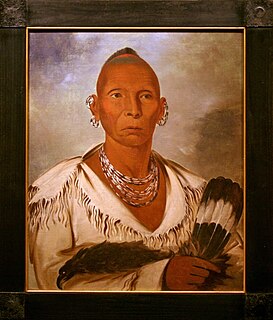 W
WThe Sac and Fox Nation of Missouri in Kansas and Nebraska is one of three federally recognized Native American tribes of Sac and Meskwaki (Fox) peoples. Their name for themselves is Nemahahaki and they are an Algonquian people and Eastern Woodland culture.
 W
WThe Sioux or Oceti Sakowin are groups of Native American tribes and First Nations peoples in North America. The modern Sioux consist of two major divisions based on language divisions: the Dakota and Lakota; collectively they are known as the Očhéthi Šakówiŋ. The term "Sioux" is an exonym created from a French transcription of the Ojibwe term "Nadouessioux", and can refer to any ethnic group within the Great Sioux Nation or to any of the nation's many language dialects.
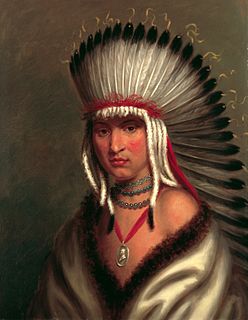 W
WThe Skidi or Skiri, also known as the Wolf Pawnee or the French Loup Pawnee, are a band of Pawnee people. According to tradition in earlier times, the Skidi were associated with the Arikara before the Arikara moved northward. The Skidi language was less related to the other Pawnee languages than the other three tribes' languages were related to each other. In historic times, the Skidi first lived on the Loup River in Nebraska.
 W
WThe Winnebago Tribe of Nebraska is one of two federally recognized tribes of Ho-Chunk Native Americans. The other Ho-Chunk tribe is the Ho-Chunk Nation of Wisconsin. Tribe members often refer to themselves as Hochungra - "People of the Parent Speech".